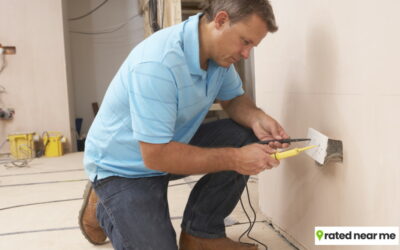Electrical wire colours in the UK have not always been the same – but whatever cable colours or plug wiring you come across in your home, this guide will help you safely match the wire colour to the wire type.
Many homeowners already know that the three types of wire found in UK homes are the “Live Wire”, “Neutral Wire” and “Earth Wire”. However, far fewer are confident in identifying which wire is which.
In fact, within the past 30 years, there have been two different electrical wire colour codes used in the UK. This guide will help you to correctly identify the live, neutral and earth wires in your home – but will also help you to recognise the tell-tale signs that electrical wires need inspecting or replacing.
Home Electrical Wiring Overview
The Consumer Unit or Fuse Box is the heart of any home electrical system. There are typically three types of circuits that run from the consumer unit and supply power to the home.
1. The Radial Light Circuit is usually used for lighting. On this circuit, the power flows from the consumer box and terminates at the last electrical installation on the line.
2. The Ring Main Circuit starts at the consumer unit, incorporates a number of electrical installations (usually plug sockets) and then returns to the consumer unit. The current can flow from either end of the circuit, which increases the power capacity of the circuit.
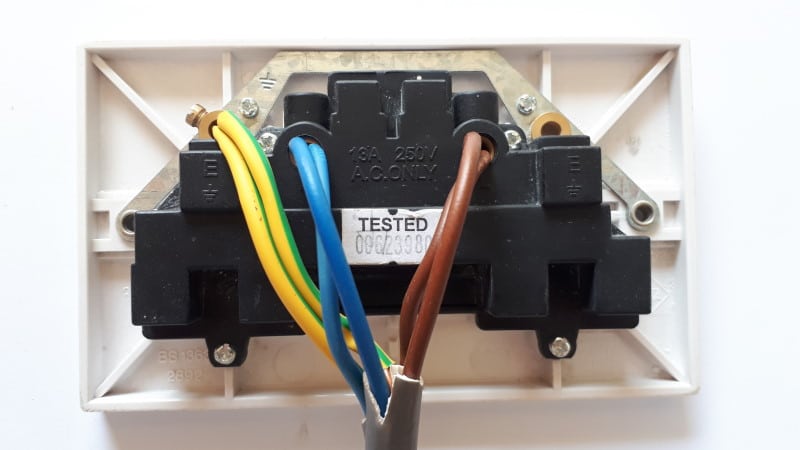
3. Finally, an Appliance Circuit supplies large appliances such as cookers via a dedicated circuit with higher gauge (higher capacity) wiring.
Live, Earth And Neutral – What does each wire do?
The circuit types described above use three different copper wires, which each serve a different purpose:
What does the live wire do?
The live wire carries a 230v electrical current to a plug socket or appliance.
What does the neutral wire do?
The neutral wire carries excess electrical current away from the plug socket or appliance and back to the consumer unit to complete the circuit.
What does the earth wire do?
If either of the live or neutral wires come into contact with a metal object or appliance, it can lead to a nasty electric shock when a person touches or comes into contact with that metal object.
However, electricity will always follow the path of least resistance. The earth wire provides the electric current with the fastest, easiest path safely down to the ground (or “earth”).
UK Wire Colours – 2006 to Present
The following UK wire colour code became mandatory for new electrical installations in 2006. It was introduced in order to align UK wire colours to the electric cable colours used in other EU countries.
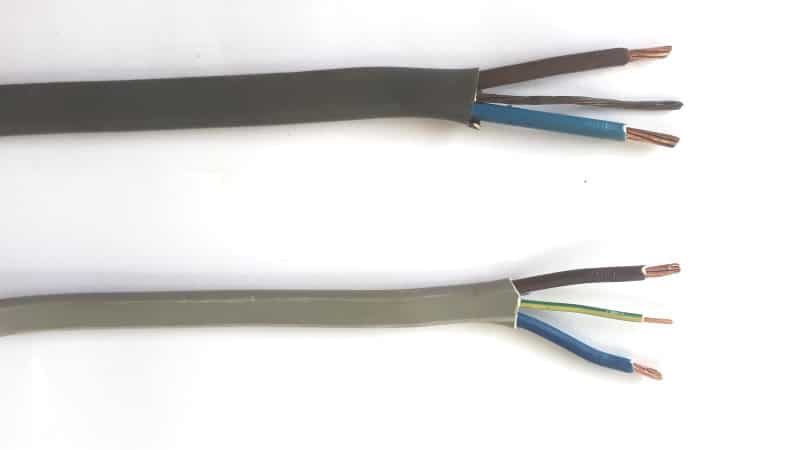
What colour is the live wire?
Live Wire Colour = BROWN
What colour is the neutral wire?
Neutral Wire Colour = BLUE
What colour is the earth wire?
Earth Wire Colour = GREEN / YELLOW
While the current UK wire colour system became mandatory in 2006, it was also optional prior to that date. So even if your home was built pre-2006, your electrical circuits may already adhere to the new system.
Old UK Wire Colours – Pre 2006
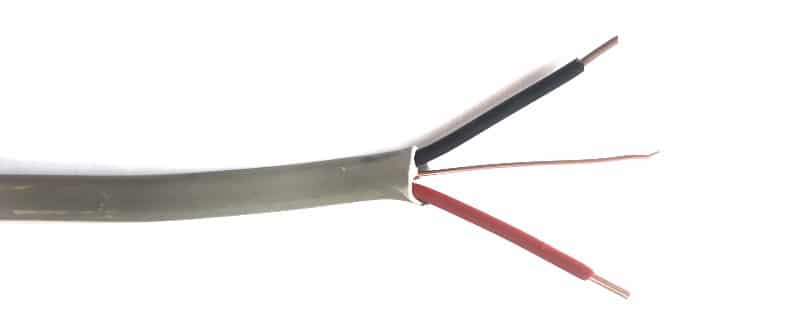
Before the transition to the new system, UK wire colours were as follows:
Live Wire Colour = Red
Neutral Wire Colour = Black
Earth Wire Colour = Green / Yellow
Plug & Plug Socket Wire Colours
Rewiring a plug or installing a plug socket is a common electrical DIY task that – unlike more complicated electrical maintenance – many people feel comfortable taking on themselves.
The wires of a plug and plug socket in the UK conform to the new live, neutral, earth standard that should now be found throughout the home.
UK Plug Socket Wire Colours
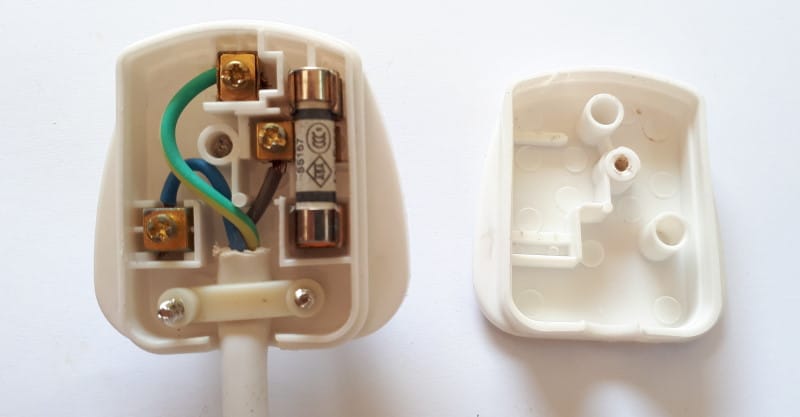
Live Wire Colour = Brown (goes to the fuse in a plug)
Neutral Wire Colour = Blue
Earth Wire Colour = Green / Yellow (the longer pin in a plug)
Live, Neutral & Earth Terminals
In addition to using the same wire colour coding used on electrical circuits throughout the home, plug and plug sockets also have labelled terminals to help you correctly wire and install new units.
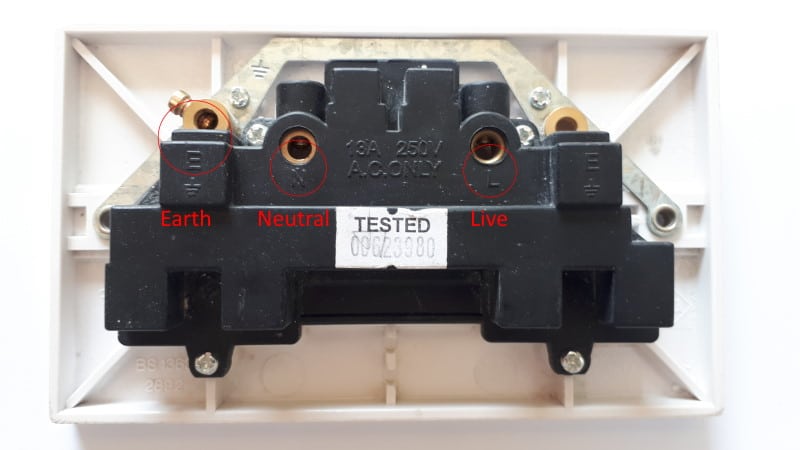
The simple alphabetical system works in conjunction with the colour coding as follows:
“L” Terminal = Live Wire = Brown Wire
“N” Terminal = Neutral Wire = Blue Wire
“E” Terminal = Earth Wire = Green & Yellow wire
UK Light Wiring Colours
The electrical wiring cable used for lighting in modern properties will use the same live, neutral and earth colours as that in sockets and plugs.
However, since the light switch effectively creates a “break” or “connection” on the live wire to switch the lights on or off, the blue neutral wire should have a brown sleeve or brown tape attached to signify that it is a live wire.
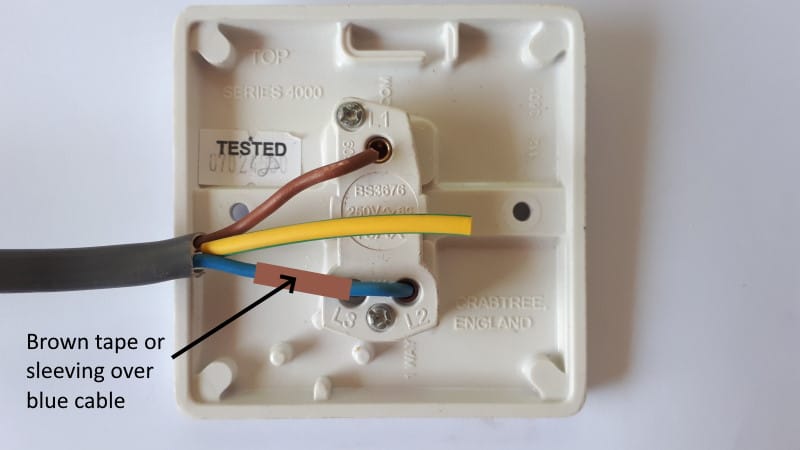
Cable manufacturers offer special cables with two brown (live wire) cables instead of individual brown and blue colours. This is available in 1mm and 1.5mm two core and earth (or twin and earth) sizes which are commonly used in UK light circuits.
The twin brown cable makes it much easier to identify that the light switch is part of the live side of the light circuit.
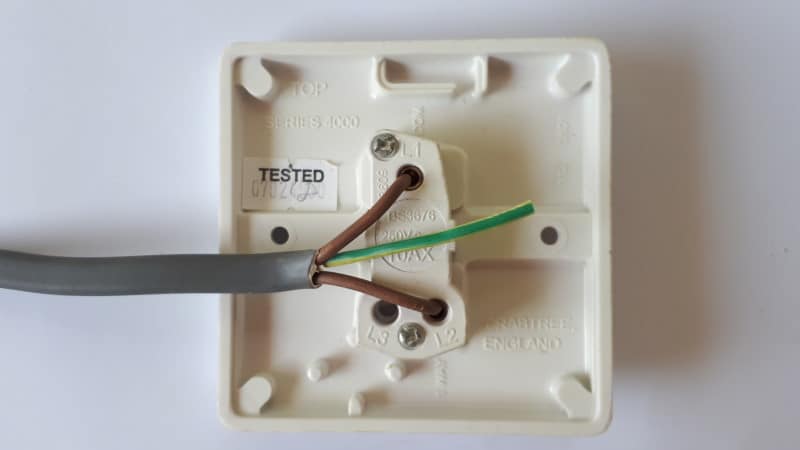
What should I do if I have old wiring in my home?
It’s likely that many homes in the UK still feature electrical wiring that uses the old colour scheme.
Note: that the new system was introduced for any new electrical installations post-2006 – and it is not mandatory to replace old wiring so that it matches the new colour code.
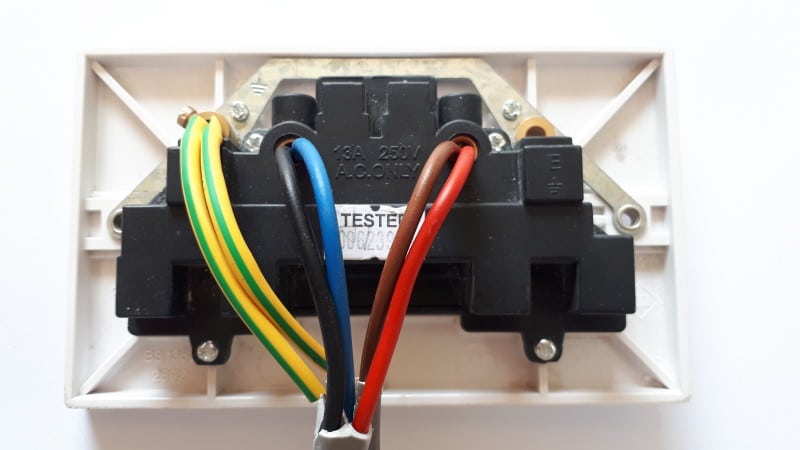
Electrical wiring can typically be expected to last 30-40 years in the right conditions, but wiring with the old colour scheme may be significantly older.
For this reason, if you come across wiring that doesn’t conform to the new colour code, it is advisable to take steps to understand the condition of the wires in your home.
1. Hire A Qualified Electrician
For complete peace of mind, many people choose to hire a local electrician to assess the condition of their wires. From a quick visual check to a full electrical installation condition report (EICR) – an electrician can help you understand if your electrics are safe and compliant with the latest regulations.
Regardless of your electrical wire colours, it is recommended that an EICR is carried out at least once every 10 years in residential properties (or more regularly in certain circumstances – for example, if you are a landlord with tenants).

To find a local electrician and compare quotes in minutes – you can use our free electrician quote service to find qualified experts near you.
2. Carry Out A Visual Inspection
Before hiring an electrician, you can also carry out a visual inspection yourself to establish the basic condition of your electrical wiring.
How To Check Your Home Electrical Wiring
While a full inspection should only be carried out by a qualified electrician, there are some signs of wear & tear that you can look for yourself in order to assess the condition of your electrical wires.
However, if you do identify any of the features below in your home electrical wiring, it would be advisable to call an electrician.
Old UK Wire Colours – Electrical cables which conform to the old UK colour code could be over 30 years old and nearing the end of their expected lifespan.
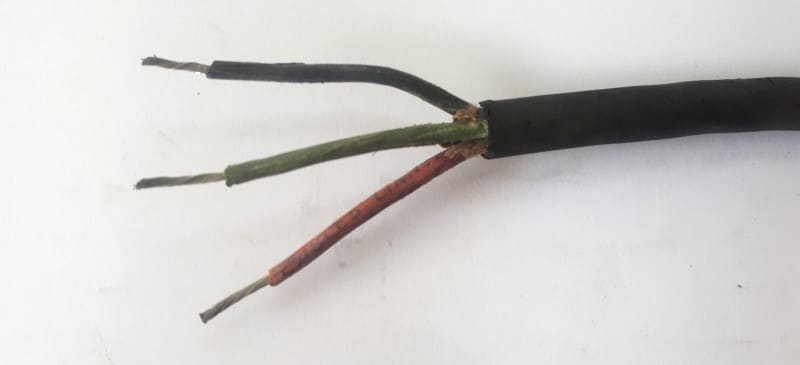
Damaged or Missing Wire Insulation – It’s very common for wire cables to become damaged, cracked or pinched – dangerously exposing the copper wire within.
Frayed or Cracked Wires – Excessive heat or corrosion can cause the copper wires themselves to fray.
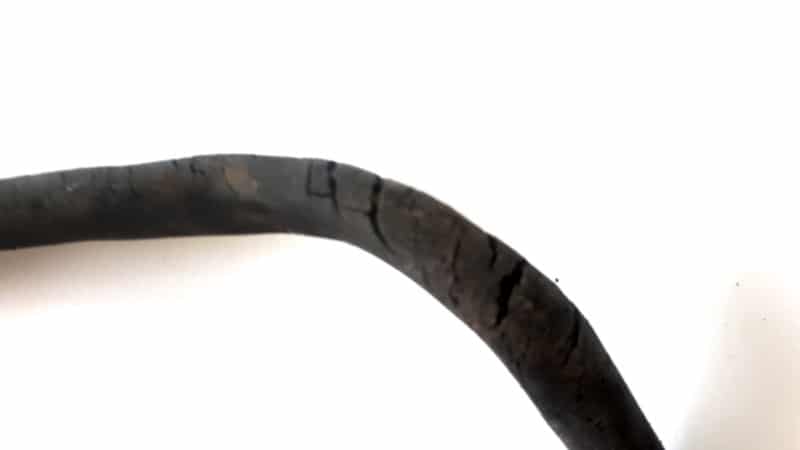
Old Types of Cable Insulation – PVC-insulated cables are the most common type of cable sheathing used today. However, older properties may still have lead-sheathed cables or tough rubber-sheathed cables (TRS) – the latter identifiable by a tough, black exterior. Any lead or TRS insulated wires are likely to be over 50 years old and well past their expected working life.
Other Signs Of Electrical Problems In Your Home
Electrical wires are not always visible or accessible, however, there are other indicators that your home electrical wiring is faulty and/or potentially dangerous. In these instances, it is highly advisable to call a qualified electrician.
Buzzing or Discoloured Plug Sockets & Switches – Light switches and plug sockets that are emitting a buzzing sound or are in some way discoloured indicate faulty wiring or a loose connection – and should not be used.
Burning Smell – If you smell burning when a plug socket or electrical outlet is in use then it is likely to be a serious safety hazard.
Flickering or Dimming Lights – If one or more lights in your home regularly flicker or dim, it could be a problem with the light bulb or light fitting, but it could also be a sign of a problem with your home’s electrical wiring.
Other Types Of Electrical Wiring To Be Aware Of
The wire colours and circuit types described above are by far the most common types of electrical wiring found in UK homes. However, it may be helpful to note other systems that you might come across:
Single Phase vs 3-Phase Wiring
The vast majority of UK homes use the Single-Phase wiring described above – where power is supplied via the live wire, returned via the neutral wire and grounded by the earth wire. The 3-Phase wiring system utilizes three live wires to deliver power, alongside a neutral and earth wire.
So, what is the difference between single-phase and 3-phase wiring?
3-Phase wiring is most commonly used on industrial and commercial premises because it is able to supply more power in a consistent manner. The single-phase power supply in UK homes doesn’t deliver constant power to our appliances. Instead, the power that is supplied actually fluctuates – within set limits – at 50 times per second.
In the 3-phase system, the power supply is shared across the three live wires, which are arranged out of phase with one another. This means that power can be supplied constantly and consistently to large industrial appliances or vital machinery in a commercial setting.
Television & Aerial Cable
It’s worth noting that television and aerial cables share some of the same wire colours as those found in household electrical circuits.
Some aerial cables are brown, the same as the new UK live wire colour, but they do not carry any electrical current.

Similarly, cable or satellite feed wires are often black, the same as the old UK neutral wire colour.

Do you have concerns about electrical wiring in your home?
If you do, then it’s best to hire a qualified electrician.
This guide should have demonstrated that understanding UK electrical wire colour is easy once you know what to look out for. It’s even possible to make some basic visual checks on the condition of electrical wires yourself.
However, the only way to get a thorough understanding of the condition of your home electrical wiring, and to address any safety issues which are identified, is to hire a qualified electrician.
You can use Rated Near Me to find highly rated services near you – absolutely free!
Click here to get quotes from qualified electricians near you.





